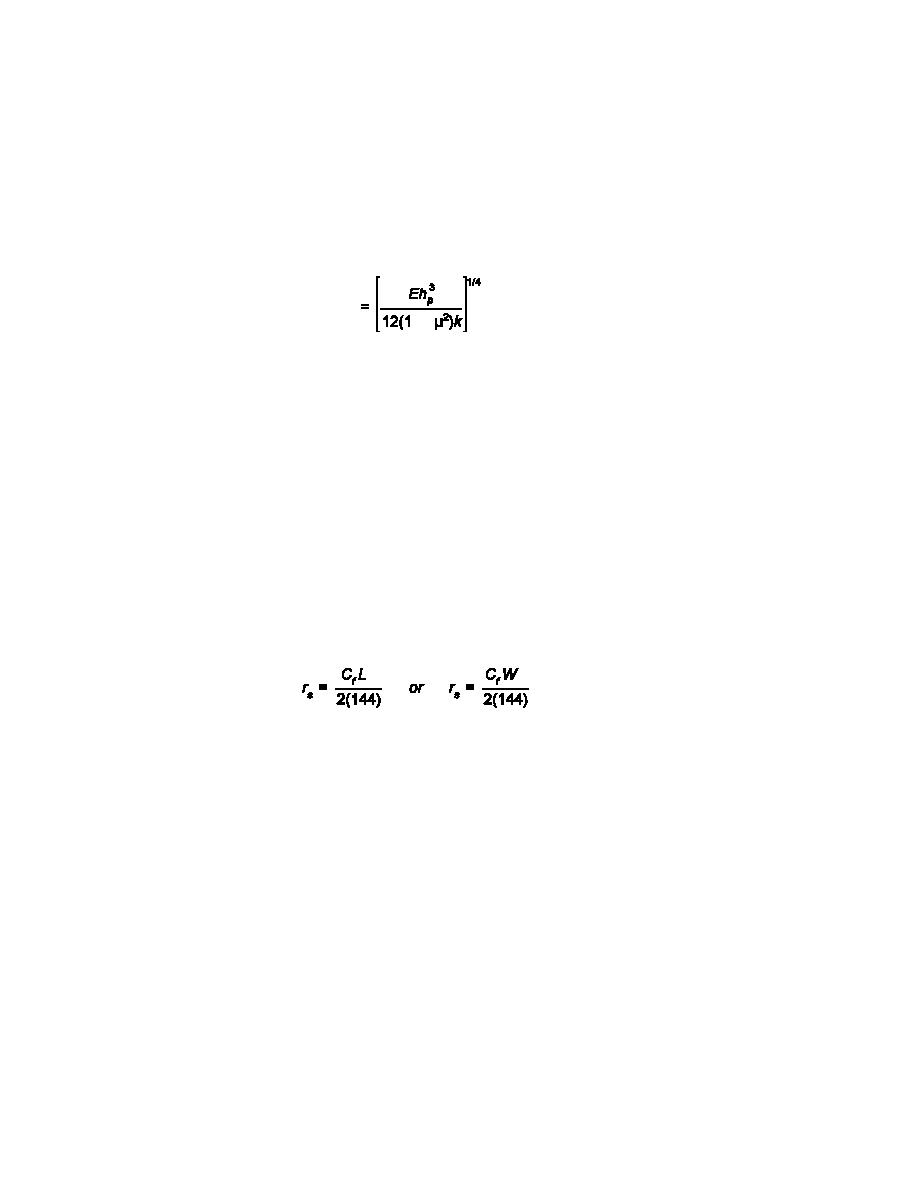
UFC 3-260-02
30 June 2001
pass level is divided by the aircraft pass per coverage factor to determine the design number of stress
repetitions, which are in turn used in Figure 16-1 to obtain N. The load-moment factor B and ratio of
multiple-wheel load to single-wheel load w are determined from Figures 16-2 and 16-3, respectively, by
entering with a value of A/R2 (note that for the light-load and Class I airfields, w is 1.0 for all values of
A/R2). A is the contact area in square inches of a tire in the main gear of the design aircraft, and R is
computed by
(16-2)
R
&
where
R = radius of relative stiffness, inches
E = the modulus of elasticity of concrete (a value of 4,000,000 psi is normally used)
hp = design thickness of prestressed concrete pavement, inches
= Poisson's ratio
k = modulus of subgrade reaction, pci
c. Foundation Restraint Stress. The subgrade restraint stress rs is a function of the coefficient of
sliding friction between the pavement and underlying foundation and the length or width of the
prestressed concrete slab and is determined by
D
D
(16-3)
where
rs = foundation restraint stress, psi
Cf = coefficient of sliding friction
L = length of prestressed concrete slab, feet
W = width of prestressed concrete slab, feet
D = density of concrete, lb/ft3
Experience has shown that for a prestressed concrete pavement constructed with sand and
polyethylene sheet bond-breaking medium on the surface of the prepared foundation, a value of Cf of
0.60 is representative. This value can be reduced, with a subsequent reduction in the design prestress
level, through the selection of materials with lower coefficients of friction and through careful preparation
of the foundation layer.
16-3



 Previous Page
Previous Page
